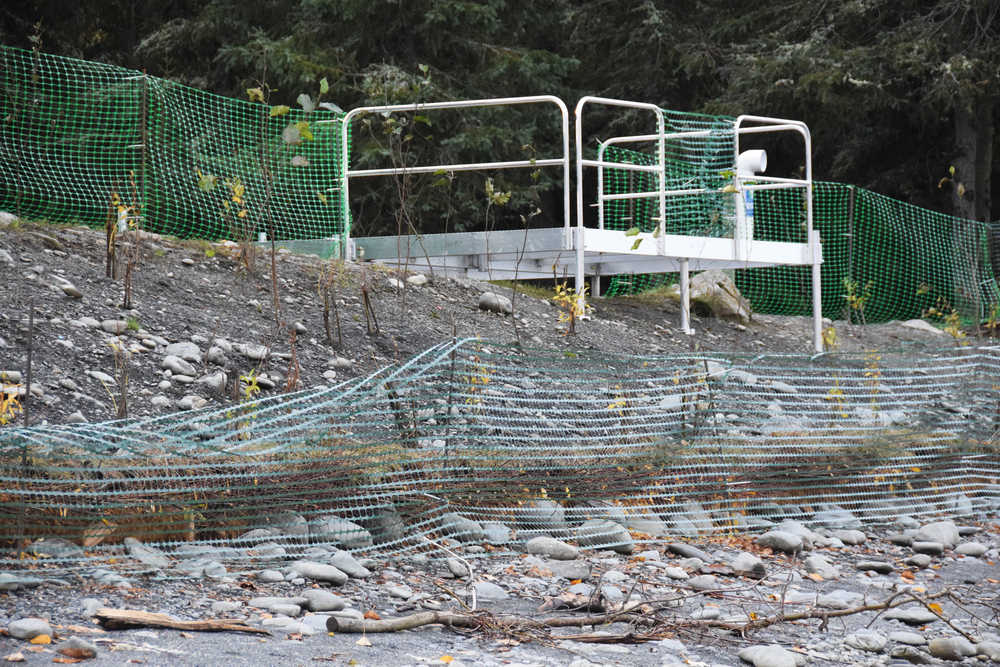Work to restore the riverbank along a section of the confluence of the Kenai and Russian rivers is in full swing.
The Kenai National Wildlife Refuge through the U.S. Fish and Wildlife Service began the project to stabilize the banks in 2006-07, upstream of the Russian River Ferry landing. Now, vegetation and light-penetrating stairways are being installed downstream on the Kenai River’s south shore to provide anglers access to the water in a less damaging way.
To some extent, all rivers move and change shape over time due to erosion because natural erosion is indifferent, said Matt Conner, visitor services manager at the refuge.
“The only time erosion becomes an issue is when it affects … plans, civilizations and roads, things like that,” he said. “So in this case when we say we’re trying to reduce the erosion, what we’re trying to do is reduce the rate of erosion because we’ve lost the vegetation because it’s such a heavily used area.”
Vegetation has been planted on the bank and the platforms of the stairways have been placed.
“So once we say, ‘Yep, this is exactly where we want them,’ they’re going to set the platforms and they’re going to get a tape measure out and then custom-build the steps,” Conner said.
Though much of the work will be done this fall and winter, Conner said the steps won’t likely be installed until the spring because they would have to be taken out over winter.
Fish and Wildlife staff will have to either take the stairs out every year and move them up the bank or lock them in place because of their precarious position on the river.
The planted vegetation should take less maintenance, Conner said.
“Within about five to 10 years, I think that’s going to look like it does upstream,” he said.
A goal of restoring the bank plant life is to improve fish habitat in the area. The project’s environmental assessment in 2006 showed the project would improve fish habitat, mostly for king and coho salmon fry along the bank, and stop further erosion. This would encourage increased salmon returns in the future.
Around 70,000 people, most of them fishermen, visit the Kenai River and Russian River confluence each year.
“That’s what we refer to as that shoulder-to-shoulder fishing experience,” Conner said. “… while people are doing that, they’ll have less disturbance on the land.”
From what Conner hears from anglers who notice or ask about the ongoing bank stabilization, he said most fishermen want to do right by the riverbanks and are supportive of the work.
Funding for the stabilization project comes from an account made up of recreation fees paid by refuge users for activities like staying in cabins or crossing the river on the ferry, Conner said.
“So money that goes to campgrounds, money that … is brought back from the ferry operations … money from visitor use days that our guides pay us for every time they take someone out in the river,” he said. “It’s a piggy bank project is the best way to describe it, and we let that kind of build up.”
The project should be finished up by next June in time for the next season, Conner said.


